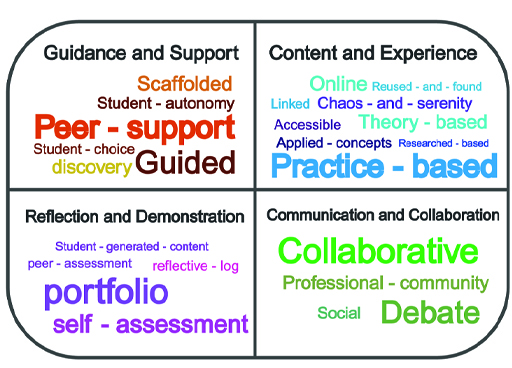3 What is innovative assessment and why is it useful?
Figure 4 presents the skills and competencies a learner could demonstrate alongside innovative assessment ideas that could be used to develop these skills and also help the learner develop knowledge. For example, in the bottom left quadrant, learners can demonstrate their reflection skills by using a reflective log or portfolio of evidence to show how they applied their skills and knowledge to a real world scenario.
For the purposes of this course, the use of innovative assessment is defined as something that enables the learner to transfer knowledge, skills, competencies and dispositions between learning and assessment. The transference between learning and assessment should be, where possible, seamless. The premise behind this approach is to ensure that the learner can see a clear connection between what they are learning and how that learning will be applied in any or all of the following areas:
- the real world
- a work environment
- as they progress onto a higher level of education.
Next, you will look at innovative methods of assessment that apply across a variety of age groups and settings, through three case studies. Each case study builds on the previous. So, case study A relates to the basic use of technology for innovative assessment. Whereas case study C requires a greater level of skill. As you read and engage in the activities think about which of these examples would best suit your professional practice.

